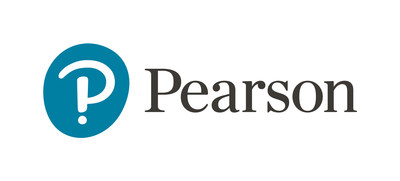Lost In Transition: Gaps in Career Paths Costing Canada's Economy C$146 Billion Annually
Werte in diesem Artikel
TORONTO, July 23, 2025 /CNW/ -- New research from Pearson (FTSE: PSON.L), the world's lifelong learning company, reveals gaps at career and learning transition points is costing Canada an estimated C$146 billion dollars in lost earnings.
Pearson's "Lost in Transition: Canada's Economic Opportunity from Closing Gaps in Learning Paths" details the economic and personal impact of learning gaps during major career transitions - from formal education to work, moving from one job to another, and disruptions caused by AI automation.
Paying the price for broken career pathways
Key findings from the report include:
- The total cost – career transition inefficiencies and skills mismatches cost the Canadian economy C$146 billion dollars in earnings annually, or nearly 5% of national output. That figure is broken down as follows:
- Automation disruption - as parts of jobs become automated, individuals needing to find new roles accounts forC$111 billion dollars in lost earnings.
- Education to work – the delays in moving between formal education and full-time employment accounts for C$9 billion dollars in lost earnings.
- Changing jobs – C$26 billion dollars is lost in the transition from one job to another as a result of involuntary job separations, such as redundancies.
- Generation at risk - In 2023 11 percent of Canadian young people aged 18 to 24 were not in employment, education, or training. More than 25 percent of young Canadians aged 15-24 that were not in employment, education or training, never held a job.
Five actions to build a resilient workforce and drive economic growth
Recognizing that responsibility for education and training sits largely with provinces and territories, while key labour-market tools reside federally, Pearson has identified five key areas where additional support and programming can further strengthen the efforts already being made by governments. These recommendations aim to enhance ongoing initiatives to mitigate economic losses and build a more resilient workforce. They include:
Jessica Biga Wadstein, Pearson, Canada Country Head said "Canada is facing a widening skills gap that is threatening our economic future. We have an immense opportunity to enhance education and skills development at the local, regional, and federal level. It's crucial that Canada strengthen its commitment to harnessing the power of AI to build a more adaptable, resilient workforce that will power sustainable economic growth and long-term prosperity."
This report is part of Pearson's "Lost in Transition: Fixing the Skills Gap" research series that warns of a potential global "skills chasm" between employer needs and employee capabilities and urgently calls for a fundamental shift in approaches to learning and skills development.
About Pearson
At Pearson, our purpose is simple: to help people realize the life they imagine through learning. We believe that every learning opportunity is a chance for a personal breakthrough. That's why our c. 18,000 Pearson employees are committed to creating vibrant and enriching learning experiences designed for real-life impact. We are the world's lifelong learning company, serving customers in nearly 200 countries with digital content, assessments, qualifications, and data. For us, learning isn't just what we do. It's who we are. Visit us at pearsonplc.com.
Media Contact:
SOURCE Pearson
Ausgewählte Hebelprodukte auf Pearson
Mit Knock-outs können spekulative Anleger überproportional an Kursbewegungen partizipieren. Wählen Sie einfach den gewünschten Hebel und wir zeigen Ihnen passende Open-End Produkte auf Pearson
Der Hebel muss zwischen 2 und 20 liegen
| Name | Hebel | KO | Emittent |
|---|
| Name | Hebel | KO | Emittent |
|---|
Nachrichten zu Pearson plc
Analysen zu Pearson plc
| Datum | Rating | Analyst | |
|---|---|---|---|
| 28.08.2019 | Pearson overweight | JP Morgan Chase & Co. | |
| 29.08.2013 | Pearson verkaufen | Deutsche Bank AG | |
| 26.02.2013 | Pearson kaufen | UBS AG | |
| 26.02.2013 | Pearson halten | S&P Equity Research | |
| 15.02.2013 | Pearson halten | Citigroup Corp. |
| Datum | Rating | Analyst | |
|---|---|---|---|
| 28.08.2019 | Pearson overweight | JP Morgan Chase & Co. | |
| 26.02.2013 | Pearson kaufen | UBS AG | |
| 28.11.2012 | Pearson outperform | Exane-BNP Paribas SA | |
| 16.11.2012 | Pearson buy | UBS AG | |
| 07.11.2012 | Pearson outperform | Exane-BNP Paribas SA |
| Datum | Rating | Analyst | |
|---|---|---|---|
| 26.02.2013 | Pearson halten | S&P Equity Research | |
| 15.02.2013 | Pearson halten | Citigroup Corp. | |
| 13.04.2012 | Pearson neutral | Exane-BNP Paribas SA | |
| 27.02.2012 | Pearson hold | ING | |
| 28.07.2010 | Pearson hold | ING |
| Datum | Rating | Analyst | |
|---|---|---|---|
| 29.08.2013 | Pearson verkaufen | Deutsche Bank AG | |
| 30.10.2012 | Pearson reduce | Nomura | |
| 30.10.2012 | Pearson sell | Société Générale Group S.A. (SG) | |
| 17.10.2012 | Pearson reduce | Nomura | |
| 15.10.2012 | Pearson reduce | Nomura |
Um die Übersicht zu verbessern, haben Sie die Möglichkeit, die Analysen für Pearson plc nach folgenden Kriterien zu filtern.
Alle: Alle Empfehlungen


